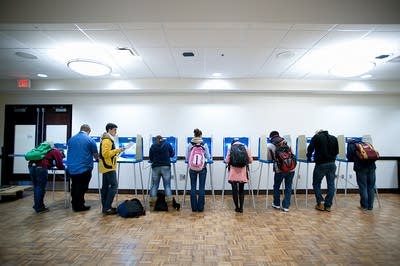Ranked-choice voting meets a crowded field in Minneapolis
Go Deeper.
Create an account or log in to save stories.
Like this?
Thanks for liking this story! We have added it to a list of your favorite stories.

This year's mayoral election will not be the first time that Minneapolis has used ranked-choice voting to decide the winner, but the number of candidates could put the system to a test.
Thirty-five candidates will appear on the ballot. Even though some of them appear to have no chance of being elected, they could have an indirect effect on the outcome when their second-choice votes are distributed among other candidates.
We look at how ranked-choice voting is going to affect the mayoral election in Minneapolis, and try to answer any questions from voters confused about the process.
LEARN MORE ABOUT RANKED-CHOICE VOTING AND THE MINNEAPOLIS ELECTION:
•
First? Second? Third? Choices and confusion for Minneapolis election
The new method means the next mayor likely will be many voters' second choice, which sets up a complicated calculus for campaigns that contact and cajole even voters who don't support their candidate as the top pick. ... It already has fundamentally changed the race by eliminating a primary, meaning that 35 candidates will appear on the ballot. It also has revealed some interesting alliances between candidates who have been asked to state their second and third choices. (Star Tribune)
Turn Up Your Support
MPR News helps you turn down the noise and build shared understanding. Turn up your support for this public resource and keep trusted journalism accessible to all.



